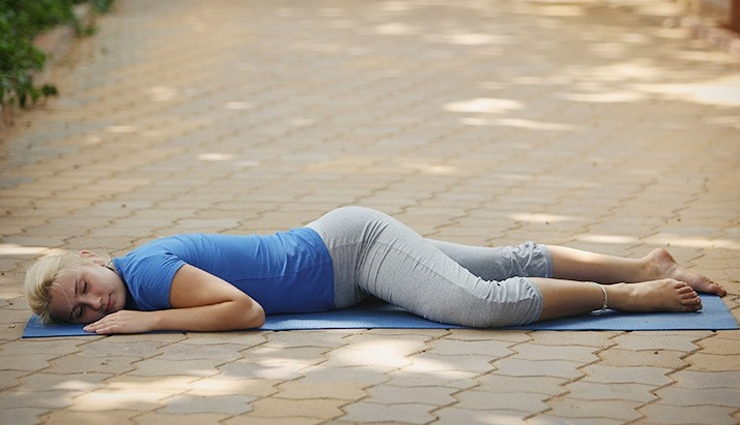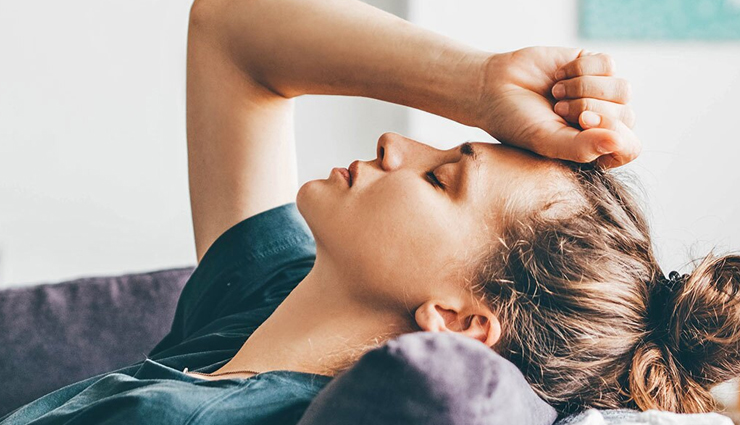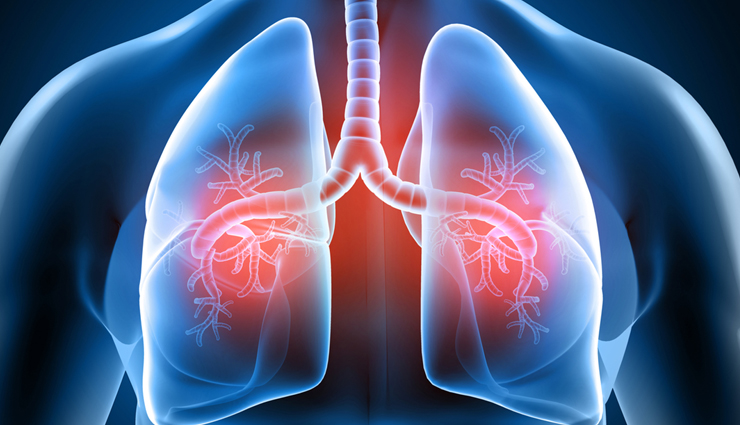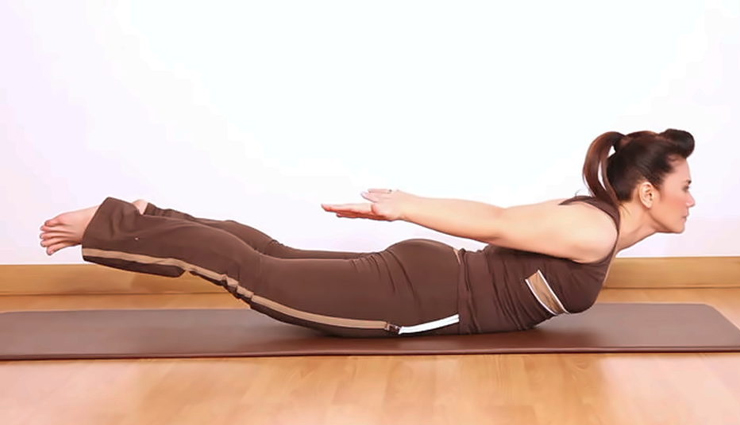- Home›
- Healthy Living›
- How To Do The Makarasana (Crocodile Pose) And What Are Its Benefits?
How To Do The Makarasana (Crocodile Pose) And What Are Its Benefits?
By: Priyanka Maheshwari Fri, 21 July 2023 10:32:22

Makarasana, popularly known as Crocodile Pose, is a tranquil and invigorating yoga posture widely embraced for its profound relaxation and stress-relieving effects. This gentle backbend emulates the serenity of a crocodile resting calmly in water, lending the pose its distinctive name. Makarasana offers a multitude of advantages for both the body and mind. In this article, we will provide a comprehensive guide on the correct way to practice Makarasana and delve into its remarkable benefits.
How to Do Makarasana:
- Start by lying flat on your stomach with your legs extended and toes pointing outward.
- Bring your palms together, and rest your forehead on your hands, positioning them in front of you.
- Allow your entire body to relax, releasing any tension in your muscles. Focus on your breath, taking slow and deep breaths.
- Gently spread your legs hip-width apart, allowing your toes to point outward comfortably.
- Bend your knees slightly and turn your toes inward, touching each other.
- Let your arms relax on the floor, alongside your body, with your elbows slightly bent.
- Softly close your eyes and direct your awareness inward.
- Take slow, deep breaths, inhaling and exhaling through your nose. As you inhale, feel your abdomen rise, and as you exhale, feel it fall.
- Remain in Makarasana for 5 to 10 minutes, or longer if you desire.
- To release, gently slide your palms under your shoulders, press your hands on the floor, and slowly sit up.

Benefits of Makarasana:
Stress Relief: Makarasana induces a state of deep relaxation, helping to alleviate stress and anxiety.
Back Pain Relief: This gentle backbend stretches the lower back and can be beneficial for relieving mild back pain.
Improved Posture: Makarasana encourages the natural curvature of the spine, promoting better posture over time.

Enhanced Digestion: The gentle pressure on the abdomen in this pose can aid in improving digestion and relieving gas and bloating.
Soothing for the Nervous System: The calming nature of Makarasana soothes the nervous system and can help in managing insomnia.
Relief for Sciatica: Practicing this asana can provide relief from sciatica pain by stretching the lower back and hips.

Promotes Mindfulness: The meditative aspect of Makarasana allows practitioners to cultivate mindfulness and inner awareness.
Improves Lung Capacity: The deep breathing in this pose enhances lung capacity and oxygenates the body.

What You Should Know Before Practicing Makarasana
Before practicing Makarasana (Crocodile Pose), there are several essential points to keep in mind to ensure a safe and beneficial practice. Here's what you should know before attempting this yoga pose:
Consult a Yoga Instructor or Healthcare Professional: If you are new to yoga or have any pre-existing medical conditions, it is advisable to consult a certified yoga instructor or healthcare professional before attempting Makarasana. They can guide you on proper alignment and modifications based on your individual needs and limitations.
Practice on an Empty Stomach: Like most yoga poses, Makarasana is best practiced on an empty stomach. Refrain from eating a heavy meal at least 2 to 3 hours before attempting the pose to avoid any discomfort during the practice.
Start with Warm-up Poses: Before diving into Makarasana, perform some gentle warm-up poses to prepare your body. Warm-ups can include gentle stretches for the back, neck, and shoulders, as well as some breathing exercises.
Choose a Comfortable Surface: Makarasana can be practiced on a yoga mat or any comfortable surface. Ensure that the area is free from any sharp objects or uneven surfaces that may cause discomfort or injury.
Listen to Your Body: During the practice, listen to your body and avoid pushing yourself into any uncomfortable or painful positions. Respect your body's limitations and work within your range of motion.
Modify the Pose if Needed: If you have any back or neck issues, consider modifying the pose to make it more comfortable for your body. You can use props like a folded blanket or cushion under your head or chest for support.
Relax and Breathe: Makarasana is a relaxation pose, so focus on your breath and allow your body to relax completely. Take slow, deep breaths to enhance the calming effect of the pose.
Avoid Overarching the Neck: While in the pose, avoid overarching the neck or straining the head backward. Keep your neck in a neutral position to avoid any strain on the cervical spine.
Maintain Even Breathing: Keep your breathing even and steady throughout the practice. Avoid holding your breath or breathing rapidly.
Release the Pose Gradually: When you're ready to come out of Makarasana, do so slowly and mindfully. Gently slide your palms under your shoulders and press your hands on the floor to sit up with ease.





